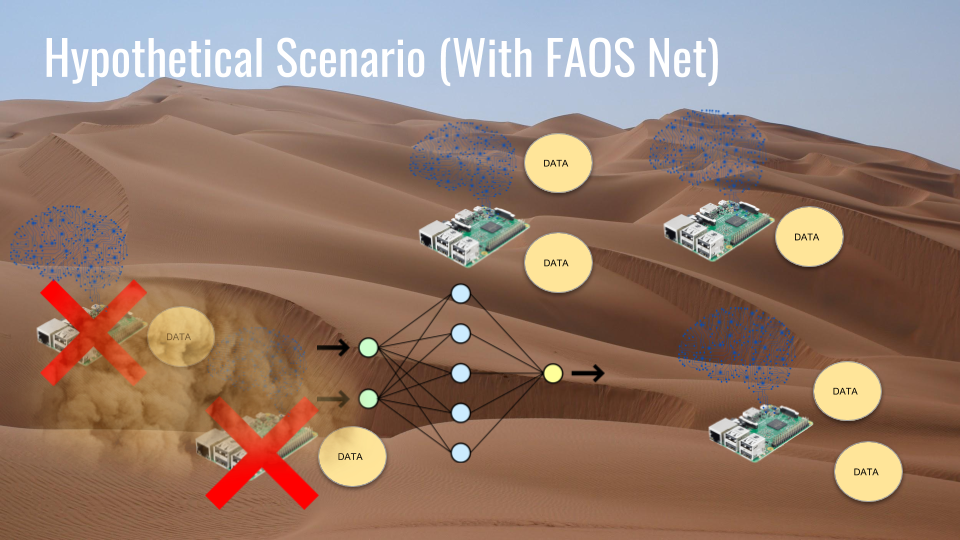Internship Experience
Contents:
Summer 2018
For the Summer of 2018 I was once again a member of the intern group at the Army Research Laboratory (ARL) for the Network Science Research Laboratory (NSRL) in Adelphi Maryland. We were again tasked with designing a project which merged IoT technology, network science, and statistics/machine learning. Our idea was to leverage an existing application developed by the NSRL called Smoke Screen (Technical Report) and complement its abilities to provide practical support for soldiers in the field. Our work was finalized in the File Availability over Smoke Screen Network (FAOS Net) application. We also wrote a technical report on the subject to promote more research in this field that is currently undergoing publication review. Below is a brief summarization of our project.
Faos Net Summarization
Imagine a scenario where files are securely encrypted on a network and then fragments of these files are distributed across several devices to ensure file security in case a device was compromised through some means. In an adverse environment, this network can be interfered by many different elements. In the event of some destructive action (intentional or not) any one of the network devices can lose connectivity.
Without the implementation of FAOS Net the information contained on the offline devices is lost for an indefinite amount of time. In the field that can be a serious problem for soldiers.
With the implementation of FAOS Net each of the devices independently use Recurrent Neural Networks (RNNs) to anticipate potential future network interference and relocate their data fragments to devices that are considered “safe” for the foreseeable future. This new protocol enables files to be accessible nearly all the time.
Summer 2017
In the summer of 2017 I was a part of a team of 6 students from different technical fields and backgrounds in the Network Science Research Laboratory (NSRL) division of the Army Research Laboratory (ARL) in Adelphi, Maryland. We were tasked with designing a project that was at the intersection of Internet of Things (IoT) technology, network science, and statistics/machine learning. The culmination of our 14 weeks of work was the Autonomous Classifying Sensor Network (ASCN) application to passively assist soldiers in the field. As a part of the program we were asked to compile a technical report to beget further research in this field. The report can be found here.


